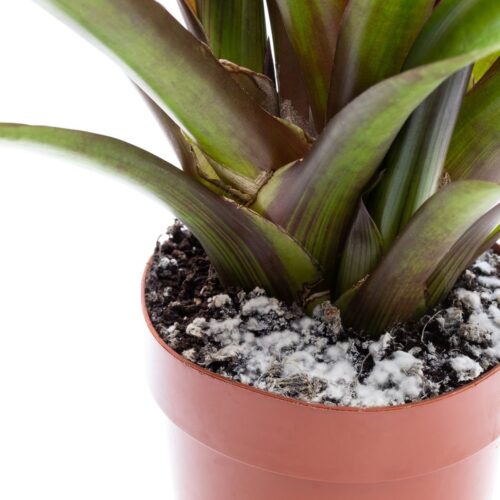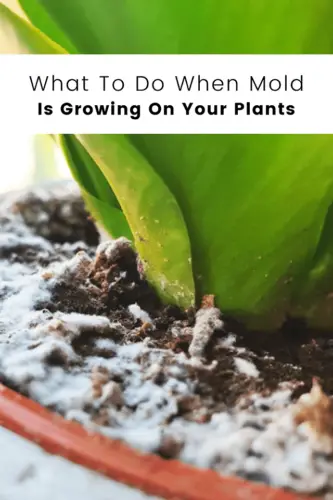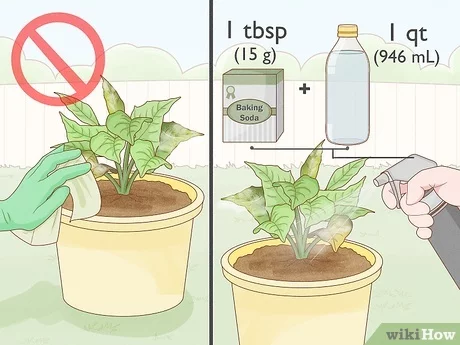If your plant grows mold, remove the affected parts and improve air circulation and soil drainage to prevent future growth. Mold on plants can be a sign of excessive moisture, poor airflow, or soil compaction, so addressing these issues is crucial for plant health.
It’s essential to act quickly to prevent the spread of mold and protect your plant from further damage. We will discuss the common causes of mold growth on plants, how to identify it, and steps to take to remedy the situation.
By following these simple steps, you can effectively manage mold on your plants and promote a healthy growing environment.

Credit: www.familyhandyman.com
Identifying Mold On Plants
When you spot mold growing on your plants, it’s essential to take immediate action to protect your plant’s health and prevent further spread. Identifying the type of mold on your plants is crucial in determining the right course of treatment.
Types Of Mold
Various types of mold can affect plants, including powdery mildew, gray mold, and downy mildew. Each type requires specific management approaches to eradicate the mold effectively.
Signs Of Mold On Plants
- White, powdery spots on leaves may indicate powdery mildew.
- Fuzzy, gray patches on stems and leaves are common signs of gray mold.
- Yellow spots that turn brown could be a symptom of downy mildew.
Preventing Mold Growth
Growing mold on your plants can be frustrating, but there are effective ways to prevent it from happening. By following proper techniques for watering, ensuring good ventilation, and using clean tools and pots, you can minimize the risk of mold growth on your beloved plants.
Proper Watering Techniques
Overwatering can create the perfect environment for mold to thrive. Ensure that the soil dries out between watering and use well-draining pots to prevent waterlogged conditions.
Good Ventilation
Adequate airflow around your plants can inhibit mold growth. Consider placing a fan nearby to keep the air circulating and preventing stagnant, moist conditions.
Using Clean Tools And Pots
Clean your gardening tools and pots regularly to prevent the spread of mold spores. Sterilize pots before using them for new plants to avoid introducing mold to a fresh environment.
Removing Mold From Plants
Isolate The Infected Plant
If you notice mold on one of your plants, the first step is to isolate the infected plant. Place it away from your other plants to prevent the mold from spreading.
Pruning Affected Areas
After isolating the plant, prune the affected areas. Carefully remove any affected leaves or stems, making sure to sanitize your pruning tools between cuts to avoid spreading the mold.
Cleaning With Mild Soap Solution
Once pruned, clean the remaining parts of the plant using a mild soap solution. Gently wipe down the leaves and stems with the solution to remove any remaining mold and spores.

Credit: www.aerifyplants.com
Treating Underlying Issues
When dealing with mold growth on your plants, it’s crucial to address the underlying issues to prevent future problems. Treating these issues will not only get rid of the mold but also help your plant thrive.
Addressing Over-watering
Over-watering can create a damp environment perfect for mold growth. Ensure your plant’s soil has proper drainage.
Managing Humidity Levels
High humidity can promote mold growth. Monitor and adjust humidity levels in the plant’s environment.
Improving Air Circulation
Proper air circulation can prevent mold by allowing moisture to evaporate. Place fans or open windows to enhance airflow.
Natural Remedies For Mold On Plants
Discovering mold on your beloved houseplants can be disheartening. However, before you hit the panic button, it’s important to remember there are natural solutions to combat this issue. In this section, we will explore three effective remedies for mold on plants: using neem oil, applying vinegar solution, and sprinkling cinnamon powder.
Neem oil is a powerful natural insecticide and fungicide that can help eliminate mold on plants. To prepare the solution, mix one part neem oil with four parts water in a spray bottle. Shake well to ensure proper blending. Next, generously spray the affected plants, making sure to cover both sides of their leaves. Repeat this process once every two weeks until the mold is gone.
Vinegar, a common household item, is an excellent remedy for mold on plants. To create the solution, mix equal parts white vinegar and water in a spray bottle. Shake well to combine. Spray the affected plants thoroughly, ensuring that the solution reaches all areas, including stems and undersides of leaves. The acidity of vinegar helps kill the mold while also preventing its further growth. Apply this solution once a week until the mold disappears.
Believe it or not, a sprinkle of cinnamon powder is another effective natural remedy for mold on plants. This aromatic spice has antifungal properties that can inhibit mold growth. Simply sprinkle a generous amount of cinnamon powder on the soil surface surrounding the plant. Alternatively, you can mix cinnamon powder with water to form a paste and apply it directly to the affected leaves. Repeat this treatment every two weeks until the mold is completely eradicated.

Credit: www.wikihow.com
Frequently Asked Questions On What To Do When Your Plant Grows Mold?
Can A Plant Be Saved If It Has Mold?
Yes, a plant can be saved if it has mold. Remove affected parts, improve air circulation, avoid over-watering, and ensure adequate sunlight. Apply a fungicide and monitor the plant for any recurring mold growth. Regularly clean surrounding areas to prevent spreading.
Seek professional help if necessary.
Should I Throw Away My Plant If It Has Mold?
If your plant has mold, trim affected areas and improve air circulation to prevent further issues.
What To Do If My Plant Is Moldy?
To treat a moldy plant, remove affected areas, improve air circulation, and avoid overwatering. Use a fungicide if necessary. Keep the plant in a well-lit area and maintain proper watering and humidity levels to prevent future mold growth.
Should You Remove Mold From Plants?
Yes, you should remove mold from plants to prevent harm and promote healthy growth. Regularly inspect and gently clean affected areas. Use a solution of water and vinegar or a fungicide to eliminate the mold. Keep plants well-ventilated and avoid overwatering to prevent future mold growth.
Conclusion
Dealing with mold on plants can be a common issue for gardeners. By taking prompt action, you can save your plant from further damage. Remember to address the root cause of the mold and implement preventive measures for healthy plant growth.
Stay vigilant and your plants will thrive.
